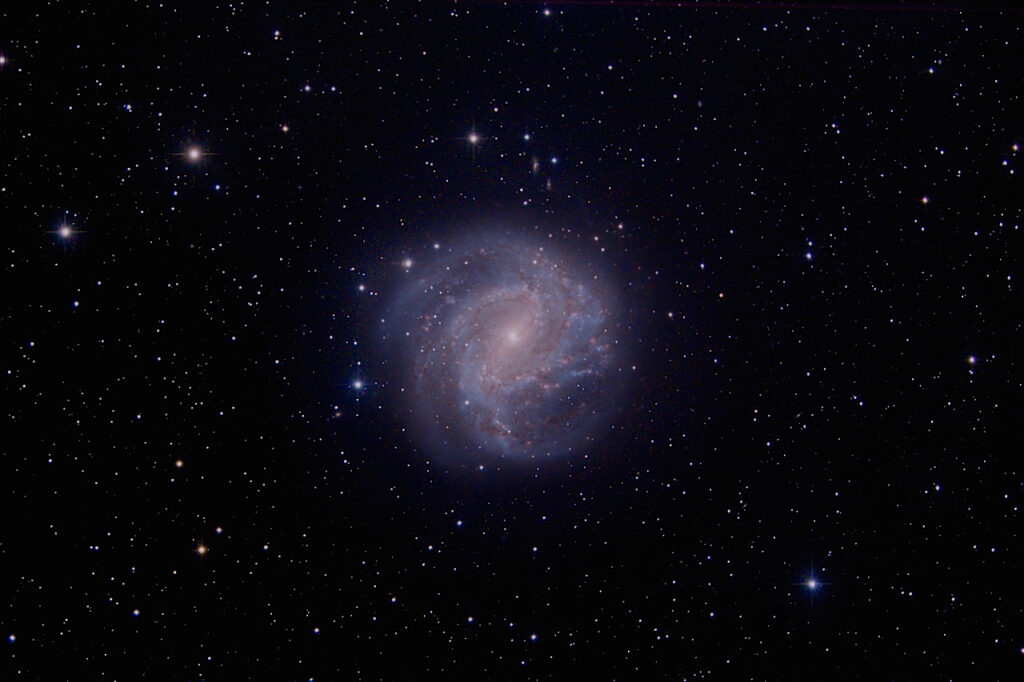M83 is an example of a face-on "barred" spiral galaxy, readily identifiable by the bar structure in its nucleus. This unique structure likely resulted from a merger of two spiral galaxies. A careful study of our own Milky Way galaxy reveals that it is a barred spiral, meaning that it would look very similar to this. Barred spiral galaxies are fairly common, and comprise about one-fourth of all galaxies according to some studies.
Note the many red and pink "knots" throughout the spiral arms of this galaxy. These consist of ionized hydrogen gas--hydrogen atoms that have been stripped of their single electron by the intense ultraviolet energy emitted by newly formed and energetic stars in the spiral arms. As the electrons quickly reconnect with hydrogen nuclei, they emit photons of discreet amounts of energy as they cascade down the energy levels toward the ground state near the atomic nucleus. The transition from the third to the second energy levels (n3 → n2 in the "Balmer series" of visible light) results in the emission of a photon with a wavelength (656 nanometers) that corresponds to red in the visible spectrum. Because this transition is very common, the star-forming regions in the arms of many spiral galaxies contain many red and pinkish knots, known as "HII" regions (distinguished from HI regions of neutral hydrogen).
According to the "spiral density wave theory," density waves rotate about the center of a spiral galaxy more slowly than dust and gas. As large clouds of hydrogen gas slam into these density waves, they condense and form large, hot stars which produce the HII regions as noted above. While there are many fundamental problems with this theory, it does attempt to explain how spiral arms of galaxies remain largely intact after several revolutions.
M83 is located in the constellation Hydra, along the Centaurus border. It rises high in the southern sky in the Spring and Summer (it was at 87 degrees elevation in this image), but only rises 10-20 degrees above the horizon for observers in the northern hemisphere, meaning that few persons in northern latitudes ever see it.
M83 is located 15 million light years away, and contains 100 billion stars.
The Southern Pinwheel Galaxy (M83) in Hydra
Date Taken:April 1, 2014
Location Taken:Siding Spring Observatory, NSW Australia
Conditions of Location: Equipment Used:Planewave 20" corrected Dall-Kirkham telescope, FLI PL6303E camera
Processing Used:This was supposed to be a 2.2 hour image consisting of 15 x 5 min luminance, plus 8 x 3 minutes RGB. Clouds were a constant threat, and ruined 7 of my 15 luminance frames. processed the image anyway. All the color subs were intact. I will add another 10 luminance frames as soon as I am able to take them. Processed in Maxim DL and Photoshop
Distance from Location:15 million light years
Constellation:Hydra
Other Link:http://hubblesite.org/newscenter/archive/releases/2014/04/image/a/

